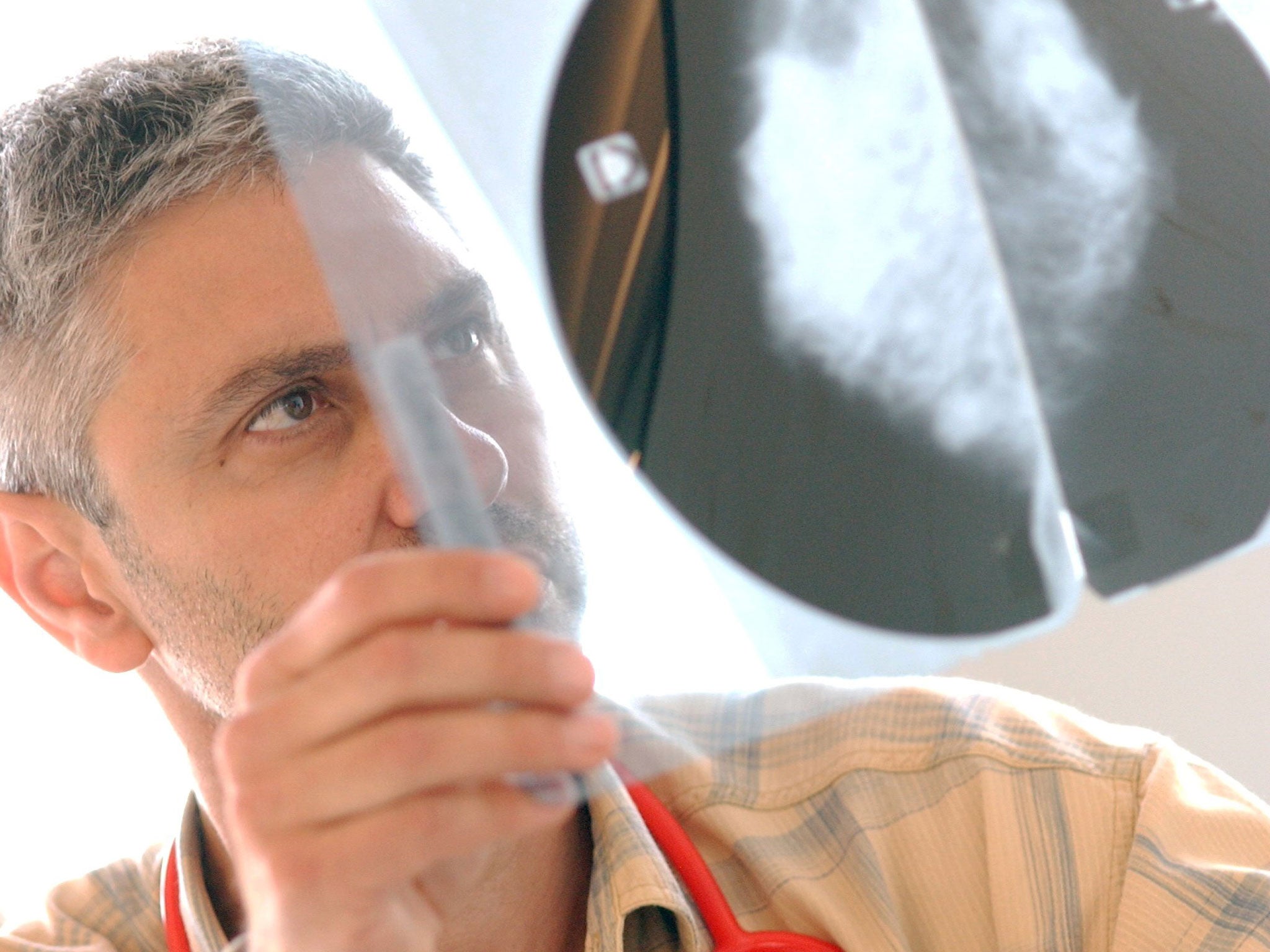Women die for lack of better drugs


A mammogram is a horrible way to torture women to find out if they have breast cancer. Your bosom is grabbed by a nurse and then pushed between two cold sheets of metal and squashed flat. A medieval form of torture that is humiliating, painful and not even reliable: many of us also have to have an ultrasound scan, if our breast tissue is dense. Mammograms must be read by someone who knows what they are doing, who can decode all the fog. Many women will pay hundreds of pounds to have their scans read by private specialists – that's what fear of cancer does.
I can't believe that the mammogram still exists in the 21st century, that a smart female doctor hasn't come up with something more sophisticated. I have lost so many of my dearest friends to cancer, mostly because it wasn't diagnosed until too late, because they didn't go for scans. Once diagnosed, cancer treatment involves further degrading treatments which leave women bald and covered in scars. Then, to prevent cancer returning, there's the prospect of five years of drugs such as Tamoxifen, with unpleasant side-effects like night sweats, hot flushes, weight gain and fatigue. No wonder new research shows that almost 40 per cent of women on the drug don't complete the course.
Breast cancer kills about 12,000 women a year – more than 400 dying unnecessarily because they couldn't cope with the impact that these drugs had on their daily lives. I can't understand why, given all the money poured into cancer research, pharmaceutical companies cannot devise a drug which is less unpleasant. We can clone animals, build body parts in a lab, create a brain in a test tube, but we can't come up with a cancer treatment 100 per cent of women are prepared to take for five years. If four in 10 would rather face death, that represents a failure on the part of medical science, a tragedy for their families and loved ones.
Our survival rates for breast cancer lag behind those for dozens of developed countries and the rest of Europe. Trusts waste money on NHS bureaucracy instead of paying for the best drugs. Lifestyle choices such as breast feeding can reduce the incidence of cancer in some women, and family history plays an important part. Screening is essential – but once cancer has been diagnosed, we rely on drugs. And at the moment too many women are choosing to die. It is a scandal.
Chef's hats off
My culinary "journey" is over. After a month being taught to cook the Michelin way, culminating in spending two hours preparing lamb three ways served on one plate, complete with a perfect paintbrush streak of jus, it was the final cook-off, and my mate Ade Edmondson won Celebrity MasterChef. Thousands of you contacted me with support and five and a half million watched last week. Ade's food looked pretty and tasted great, whereas my chilli ice cream, duck shepherd's pie and black pudding salad was chunky and uncompromising, like me. On the Today programme yesterday, food writer Xanthe Clay described the show as "opera" and "food porn", and asked, "Who wants to put a cottage pie in a ring mould?" My sentiments exactly. Rest assured that there are no ring moulds chez JSP.
My heroine
The sea is now the perfect temperature for swimming, and in a steady drizzle last Friday I was the only person in the water at high tide near Whitstable in Kent. A few dozen seagulls and I bobbed about in a slight swell – a calming experience I thoroughly recommend. My new role model is Diana Nyad, who has just completed the longest open-water swim in the world – about 112 miles – and is the first person to have swum from Cuba to Florida without a shark cage. Heroic, and inspirational, this extraordinary feat took more than 53 hours. The headline in The Times read "Woman conquers age and jellyfish" – managing to be patronising, ageist and sexist at all once.
Protect this loch
Loch Etive is one of the most fabulous places on earth, inaccessible, serenely beautiful, with astonishing views of the Highlands in every direction. For several years I've spent time walking the tough Munros that surround the loch and fishing with friends. There's no mobile reception, just a long single track road which ends at the mouth of the River Awe, famed for its salmon. A few brave souls camp here; sadly, too many leave their litter behind. Now Loch Etive is under threat from another kind of pollution. There are already five fish farms further down the Loch, but now Dawnfresh wants to site a huge rainbow trout farm right near the mouth of the Awe, consisting of 10 cages, each 80 metres across.
Why should environmental and visual disfigurement be justified because of our insatiable desire for protein? Farmed fish is flabby and tasteless. Why not eat less fish of better quality? Why can't the waters of Loch Etive be better protected by the Scottish Parliament? (But then, Donald Trump's golf course got the go-ahead in spite of huge objections). If these fish escape they will destroy wild fishing and pollute the water. And how many jobs will be created? That's always the feeble justification for environmental desecration. The fish will be fed by machines. Shooting, stalking and salmon fishing provide more jobs. There are more than 800 objections. But will councillors have the guts to turn this proposal down?
Thin talk
Vogue has made a short film which is being sent to 1,000 schools, showing all the work that goes into photoshoots. Apparently it takes 20 highly skilled experts up to three hours to primp and paint a model for the fashion bible. The film also shows how the resulting images are digitally enhanced to remove pimples and any other defects real women might suffer, such as stray body hair, and cleavage can be added to boney girls who resemble stick insects. The film is accompanied by a lesson plan which is supposed to encourage girls to have a healthy attitude to body image. It emphasises that only 12 per cent of women will ever be as thin as a model.
On Radio 4, UK Vogue editor Alexandra Shulman was unapologetic about choosing thin models – "as long as they are healthy". She said that outside the fashion pages the magazine featured women of all shapes and sizes. But the party pages only show a certain type of slender person, most women on the cover (like this month's Alexa Chung) are painfully thin, and breasts tend to be cropped out. Fat in the fashion world is a size 12, when 16 is the national average. Alex thinks that we only want to look at high fashion on thin women. I disagree. And using girls that look under 16 to advertise expensive brands borders on paedophilia. Vogue is only daintily dipping its toes into murky waters.
Join our commenting forum
Join thought-provoking conversations, follow other Independent readers and see their replies
Comments
Bookmark popover
Removed from bookmarks